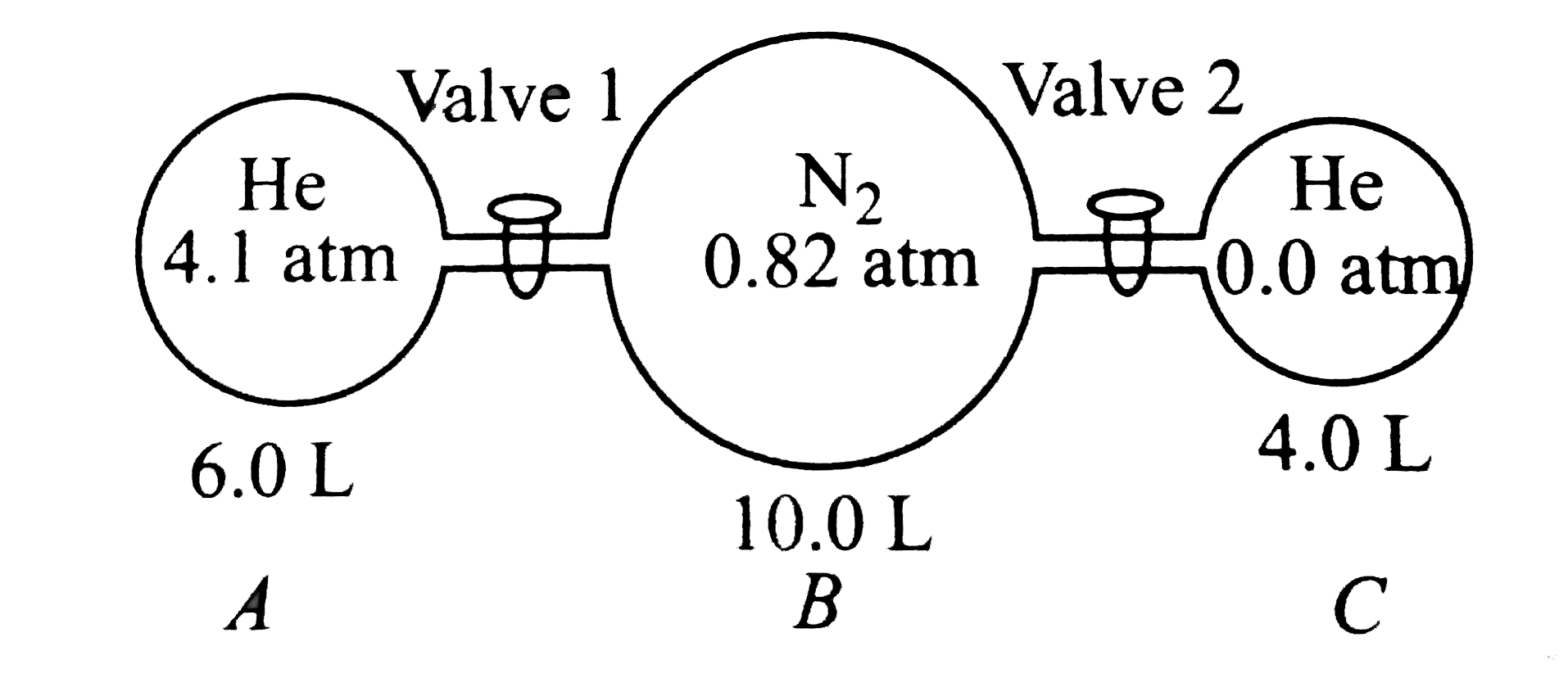A sample_(92)238U when kept at 298 K in a closed cassel shows α−decay and β−decay to given _(82)206Pb. After t hour the volume of the gas collected in the vessel at 1 atm, 273K is found to be 89.6 ml. Then which of the the following is/are correct for the nucler process and the products of the process ?
Mass of Pb obtained in time t hour =103mg.
If the temperatures is increased by 10∘C then the time taken for the same amount of gas to be produced will be t2 hour.
α particales show more ionisation power rhan β particles.
lmbda radiations undergoes no deviation while traveling through electric or magnetic field.
The correct Answer is:A, C, D
Topper's Solved these Questions
- CHEMICAL KINETICSBOOK - GRB PUBLICATIONCHAPTER - CHEMICAL KINETICSEXERCISE - Comprehension type 1
1 Video
- CHEMICAL KINETICSBOOK - GRB PUBLICATIONCHAPTER - CHEMICAL KINETICSEXERCISE - Comprehension type 2
1 Video
- CHEMICAL KINETICSBOOK - GRB PUBLICATIONCHAPTER - CHEMICAL KINETICSEXERCISE - Reasoning Type
14 Videos
- CHEMICAL BONDING-IBOOK - GRB PUBLICATIONCHAPTER - CHEMICAL BONDING-IEXERCISE - Subjective Type
120 Videos
- COORDINATION COMPOUNDSBOOK - GRB PUBLICATIONCHAPTER - COORDINATION COMPOUNDSEXERCISE - SBJECTIVE TYPE
98 Videos
Similar Questions
A closed vessel with rigid walls contains 1 mole of .23892U and 1 mole of air at 298K. Considering complete decay of .23892U to .20682Pbthe ratio of the final pressure to the initial pressure of the system at 298K is
View SolutionA closed vessel with rigid walls contains 1 mole of .23892U and 1 mole of air at 298K. Considering complete decay of .23892U to .20682Pbthe ratio of the final pressure to the initial pressure of the system at 298K is
View SolutionA closed vessel with rigid walls contains 1 mole of .23892U and 1 mole of air at 298K. Considering complete decay of .23892U to .20682Pbthe ratio of the final pressure to the initial pressure of the system at 298K is
View SolutionA closed vessel with rigid walls contains 1 mole of .23892U and 1 mole of air at 298K. Considering complete decay of .23892U to .20682Pbthe ratio of the final pressure to the initial pressure of the system at 298K is
View SolutionA closed vessel with rigid walls contains 1 mole of .23892U and 1 mole of air at 298K. Considering complete decay of .23892U to .20682Pbthe ratio of the final pressure to the initial pressure of the system at 298K is
View SolutionOne mole of X present in a closed vessel undergoes decays as:
.ZXA→.Z−2YA−4+(.2He4)
What will be the volume of helium gas collected as SATP and STP (1 bar pressures, 273K temperature) after 20 days (t1/2ofA=10 days)?
View SolutionOne mole of X present in a closed vessel undergoes decays as:
.ZXA→.Z−2YA−4+(.2He4)
What will be the volume of helium gas collected as SATP and STP (1 bar pressures, 273K temperature) after 20 days (t1/2ofA=10 days)?
View SolutionThe figure given below shows three glass chambers that are connected by valves of negligible volume. At the outset of an experiment, the valves are closed and the chambers contain the gases as detailed in the diagram. All the chambers are at the temperature of 300K and external pressure of 1.0atm.

Which of the following represents the total kinetic energy of all the gas molecules after both valves are opened?
(R=0.082atmLK−1mol−1=8.314JK_1mol−1)
View SolutionThe figure given below shows three glass chambers that are connected by valves of negligible volume. At the outset of an experiment, the valves are closed and the chambers contain the gases as detailed in the diagram. All the chambers are at the temperature of 300K and external pressure of 1.0atm.

Which of the following represents the total kinetic energy of all the gas molecules after both valves are opened?
(R=0.082atmLK−1mol−1=8.314JK_1mol−1)
View SolutionA mixture of two solid elements with a mass of 1.52g was treated with an excess of hydrochloric acid. A volume of 0.896dm3 of a gas was liberated in this process and 0.56g of a residue remained which was undissolved in the excess of the acid.
In another experiment, 1.52g of the same mixture were allowed to react with an excess of a 10% sodium hydroxide solution. In this case 0.896dm3 of a gas were also evolved but 0.96g of an undissolved residue remained.
In the third experiment, 1.52g of the initial mixture were heated to high temperature without acess of the air. In this way a compound was formed which was totally soluble in hydrochloric acid and 0.448dm3 of an unknown gas were released. All the gas obtained was introduced into a one litre closed vessel filled with oxygen. After the reaction of the unknown gas with oxygen the pressure in the vessel decreased by approximately ten times (T=const).
Write chemical equations for the above reactions and prove their correctness by calculations. In solving the problem consider that the volumes of gases were measured at STP and round up the relative atomic masses to whole numbers.
View Solution
